Tour de France Stage 18 vs. Our Backyard
We lined up Onion Valley next to Col de la Madeleine to see how California climbs stack up to the Tour. Turns out? The pain is... pretty comparable. See how your favorite routes measure up—and how you can turn your own into custom-designed climb maps.
Climb Compare for Cyclists Who Love Numbers
Stage 18 of the 2025 Tour de France featured some of the most iconic and brutal climbs in the French Alps—Col du Glandon, Col de la Madeleine, and Col de la Loze. Watching it unfold, we couldn’t help but wonder:
How do these legendary climbs stack up against the routes we know and ride here in the U.S.—in Boulder, California, and Colorado’s high alpine passes?
So, we mapped them. Literally. This project is part homage, part analysis. We wanted to see not just the stats—elevation gain, length, grade—but also how the feel of these climbs compares when visualized side-by-side.
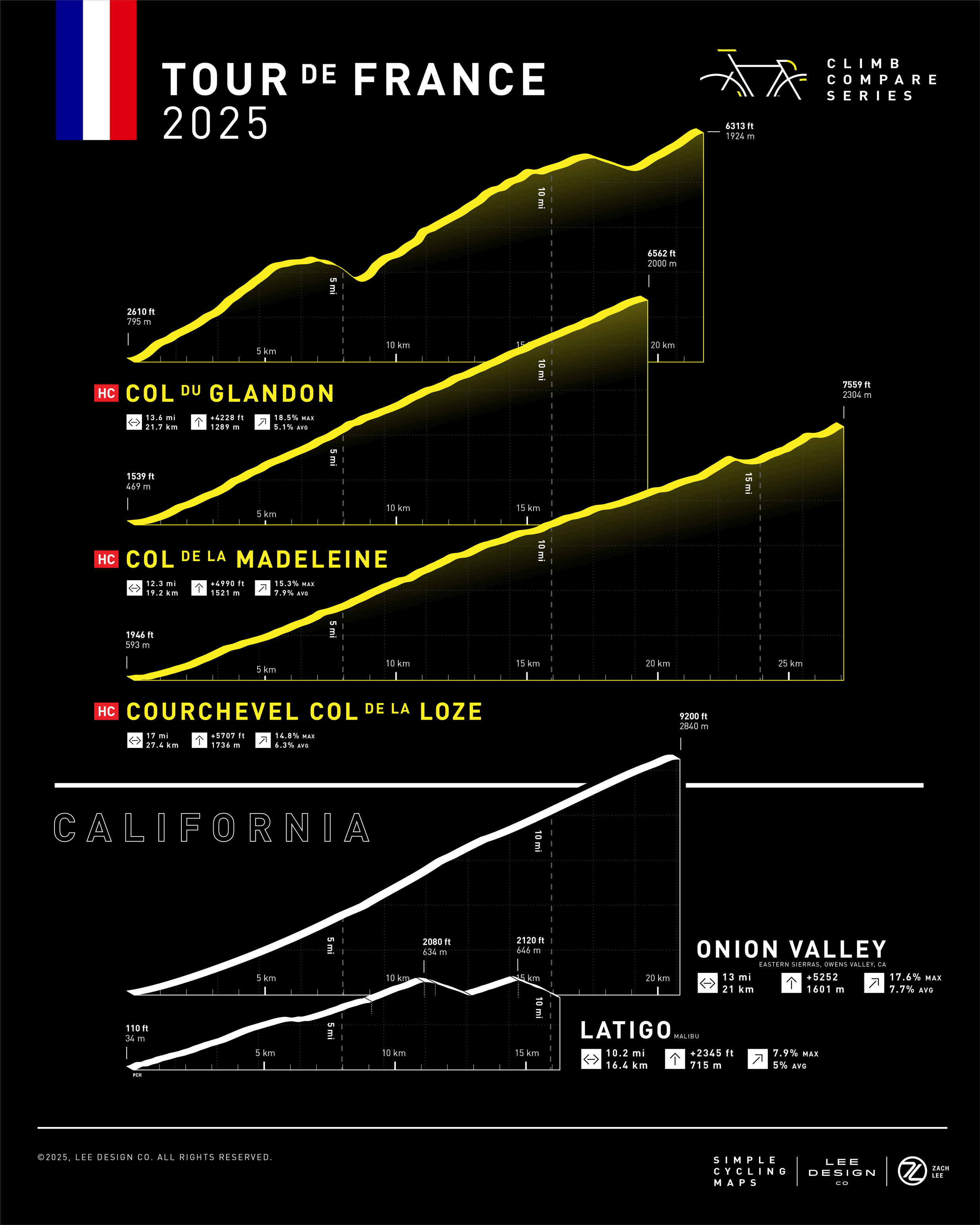
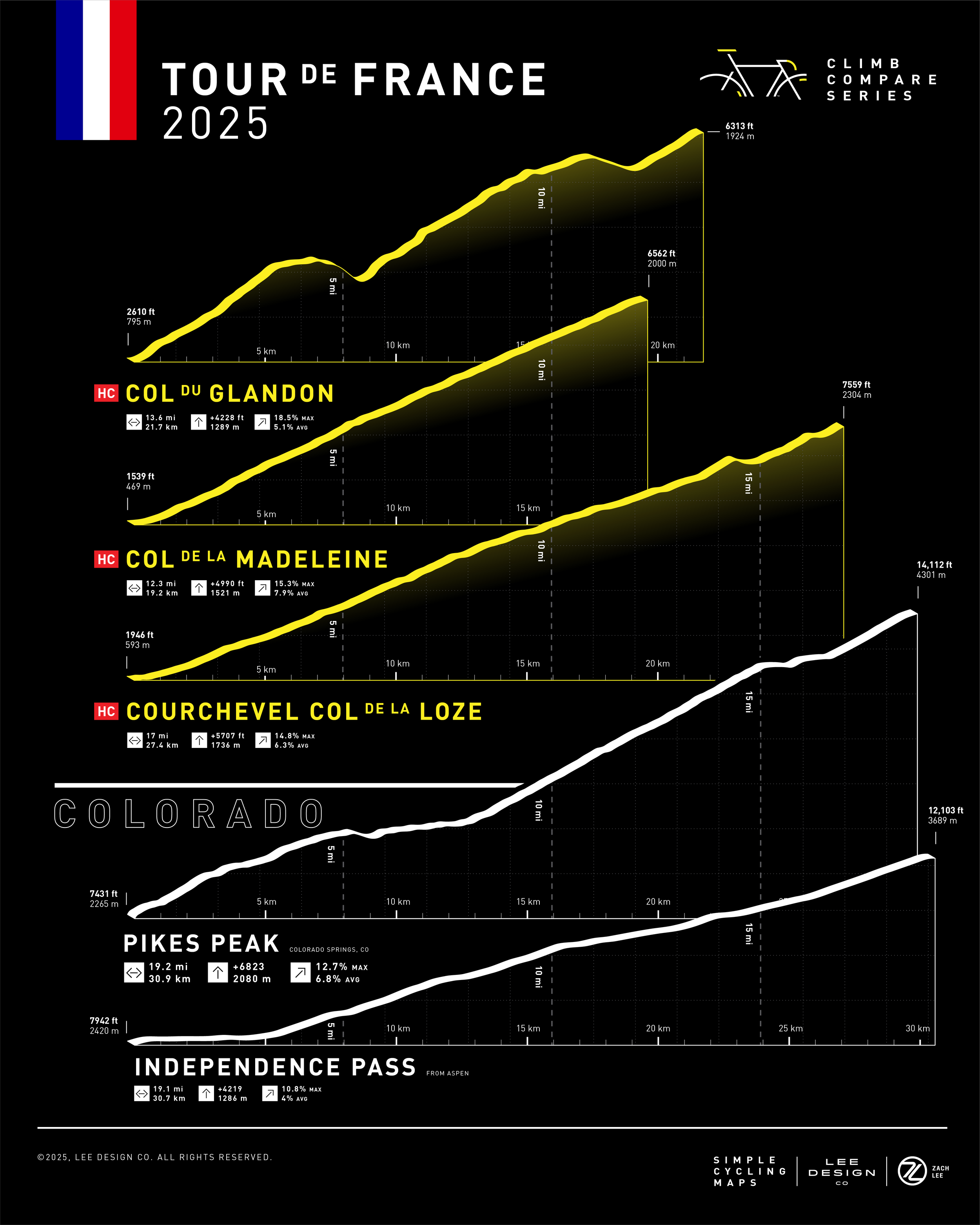
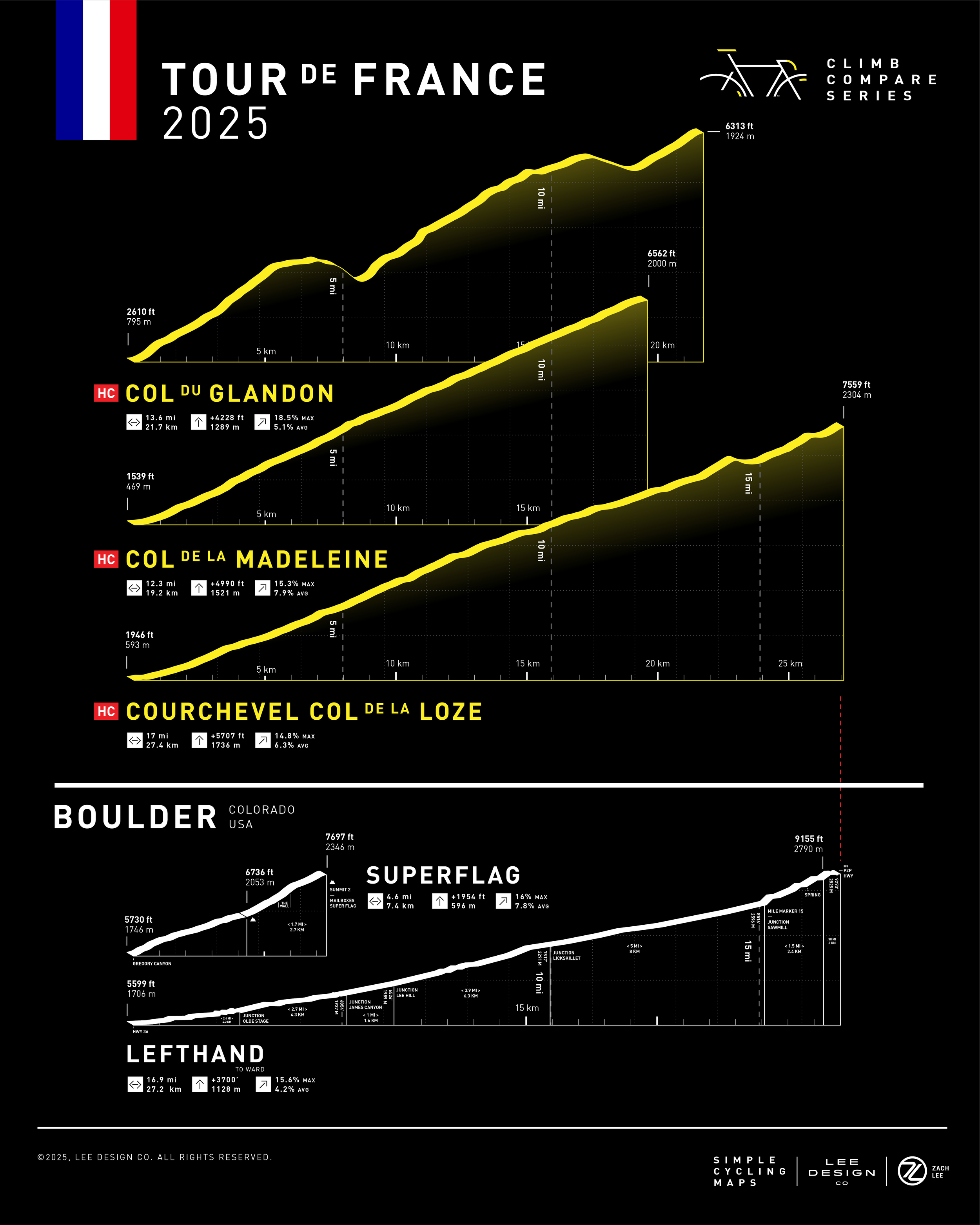
The Climbs Compared
🇫🇷 Tour de France Climbs
Col du Glandon: 21.7 km | 1,289 m gain | 6.1% avg | 15.5% max
Col de la Madeleine: 19.2 km | 1,522 m gain | 7.9% avg | 11.5% max
Courchevel Col de la Loze: 27.4 km | 1,736 m gain | 6.3% avg | 16.4% max
These are HC (“Hors Catégorie”) climbs—notable not only for their steepness but also their relentless length and altitude gain. In the pro peloton, these are make-or-break climbs that define stages, and sometimes, the Tour itself.
🇺🇸 U.S. Climbs (California + Colorado)
We selected local climbs with similar profiles—some match in length, some in brutality, and some in emotional instability:
Independence Pass (Aspen): 30.7 km | 1,288 m gain | 4.1% avg | 10.8% max
Pikes Peak: 30.9 km | 1,488 m gain | 6.8% avg | 12.7% max
Onion Valley (Eastern Sierra): 21 km | 1,601 m gain | 7.7% avg | 17.6% max
Latigo Canyon (Malibu): 16.4 km | 715 m gain | 5% avg | 7.9% max
SuperFlag + Lefthand (Boulder): Combined ~27 km | ~1,250 m gain
We chose these climbs not because they mimic the Tour exactly—but because they evoke the same rider experience: long, punishing efforts with either sharp kickers or thin air as your companion.
Design Intent
These visuals were created to tell a story—not just about stats, but about how these climbs feel. Our comparison maps are scaled to match each route by distance and elevation so you can truly see how your local climb stacks up against the Tour.
It’s not about one being “harder”—it’s about creating a new lens to appreciate the landscapes we ride in and the effort it takes to conquer them.
Takeaways for Riders:
The French Alps pack more altitude per kilometer, but climbs like Onion Valley and Pikes Peak punch well above their profile.
Boulder’s climbs are shorter—but when combined (hello, SuperFlag + Lefthand), they deliver serious vertical in a small package.
Riding local doesn’t mean riding easy. These routes earn their stripes.
Want to map your own climb?
We create custom infographics of your favorite routes—designed to look as epic as they felt.
🗺️ [Get Your Custom Climb Map →]
Other Climb Compares
Giro vs Boulder
Who climbs it best—Europe’s grand tour icons or Colorado’s backyard bruisers? Every spring, the Giro d’Italia reminds us that suffering can be beautiful. With switchbacks as sharp as the espresso and gradients that make your quads weep, the Giro’s mountain stages are pure cycling theatre. We stacked three legendary Giro ascents from the 2025 edition of the race—Monte Grappa, Colle delle Finestre, and Mortirolo—against Boulder’s icons: Lefthand Canyon, Sunshine Canyon, and SuperFlag. Here's what we found:
Monte Grappa is a long climb, not unlike Lefthand.
Finestre is steep and half paved, half gravel, like Sunshine.
Mortirolo is hellishly steep and shorter than the others. Superflag is somewhat similar in that vain, but maybe we should have compared Magnolia instead.
While Boulder may lack the pitch and prestige of the Alps or the hype of the Giro, we’ve got climbs that hold their own at a much higher elevation—and a cycling culture that’s just as fierce. Think you’ve got what it takes? Try tackling all three in one day…
→ Grab the full Boulder Climb Compare print or share the graphic with your ride crew and settle the debate for yourself.
Other Climb Compares
How Do Cipressa & Poggio Stack Up?
Milan-San Remo, the longest one-day race on the pro calendar, tests riders with 261 km of build-up before they hit the decisive Cipressa and Poggio climbs. These ascents aren’t monstrous on paper, but after seven hours in the saddle, they become race-defining. To put them into perspective, we’ve lined them up against two classic U.S. climbs: Rock Store in the Santa Monica Mountains and Flagstaff in Boulder.
Cipressa (5.6 km, 4.3% avg) is a steady grind, comparable in length to Rock Store but with a milder pitch. Poggio (3.7 km, 4.0% avg) is short and punchy, demanding the kind of acceleration that makes or breaks the final sprint.
Compare that to Boulder’s Flagstaff (4.7 km, 6.5% avg), where steeper grades force a relentless effort. While neither Italian climb is the hardest you’ll ride, the race-day fatigue and tactical urgency make them feel like mountains.
Would you rather take on these climbs fresh or after 160+ miles of racing?
Boulder vs Mallorca
Boulder is quite high with climbs starting at around 5430ft (1655m). Mallorca on the other hand is basically at sea level. Boulder is dry and in the middle of the United States. Mallorca is an island in the Mediterranean. Two beautiful, very different places, with cycling in common.
PUIG MAJOR v. SUNSHINE CANYON
Somewhat similar in distance and close-ish elevation gain, but otherwise these climbs feel very different. Puig Major is a flowy, steady power climb on buttery smooth asphalt. It’s never steep or punchy. Sunshine is a climb of multiple personalities. Gradual, then steep, then mellow, then even steeper, then gravel (smooth at times or brain rattling washboards other times). It’s still one of the best climbs in Boulder and will get you to Gold Hill (for the cookies and pie of course).
SA CALOBRA v. SUPERFLAG: The Icons
Both of these climbs are world-class. It’s a trek to get to Sa Calobra and once you’re there you first descend the whole length down to a little cove w/ cafes. Turn right back around and start the climb which twists, turns, and loops back on itself at the top like a snake. This road was designed for beauty, not for efficiency. Superflag on the other hand is accessible directly from downtown Boulder (literally 10 minutes ride), which makes it a perfect morning or lunch ride. Steep at first (to the flagstaff house), then more gradual until you pass the amphitheater turnoff, which is where it gets significantly harder. The climbs share similar gradients and neither of them terribly long (say 45-50minutes +/-), but they are extremely memorable. They both offer incredible views and will always encourage you to push a little harder.
SA BATALLA (my fav) v. LEE HILL
Small-ish climbs on the way to bigger things. Sa Batalla and Lee Hill are similar in many ways. Both climbs have two distinct segments. First half, then a reprieve, then punch it for the second half. I’ll admit, Sa Batalla (aka The Petrol Station Climb) is possibly my favorite climb in Mallorca. It’s a bit underrated, because you’re always on the way to something bigger (like Sa Calobra), but the road is just perfect. You ascend along cliff terraced olive groves, fragrant pines, and limestone walls (you may also see some road goats), then you reach the summit at the Petrol Station and Cafe where you and hoards of other cyclists are grabbing coffee and supplies. Lee Hill in comparison is a two-way climb. Clock-wise (front side) is longer. Counterclock-wise (back side from lefthand canyon) is shorter, but still quite steep.
Uphill (Skiing) vs Uphill (Cycling) Boulder
In the past, Colorado winters were rough on us. We couldn’t wait for them to be over, so that we could get back outside on the bike. But this year we were determined to be less grumpy (more fit) and as it turns out we’ve grown to like nordic skiing. It doesn’t hurt that Eldora Nordic Center is only 45 minutes away. We had always heard that Eldora is a hard place to learn, which has proven to be true compared to other areas like Frisco and Winter Park. But then it’s all relative, right? One morning I got to Eldora early ~ 7 am and saw people skiing/climbing the hill under the chair lift and was intrigued. I didn’t know you could climb that steep on skies! To get a comparison, Zach overlaid the ski profile with one of our steepest and popular cycling profiles - Lickskillet and Chapman. Check it out below. ~M
Wout's Favorites vs Colorado
We had an absolute blast riding with @woutvanaert on @rouvyapp today! During an Instagram Live session, someone asked him about his favorite climbs, and he mentioned the Stelvio and Mont Ventoux. Naturally, we had to dive into a quick comparison of those epic climbs.
The Stelvio is steep, long, and way higher in elevation compared to most climbs. If you’re familiar with Independence Pass outside Aspen, the distance is comparable, but the Stelvio is much steeper. Mont Ventoux? Another beast altogether, with its own unique challenges.
Climb Compare - TDF 22
TDF Climbs vs Boulder
We had a ton of fun comparing the top finish climbs of the 2022 TDF with our local Boulder gems.
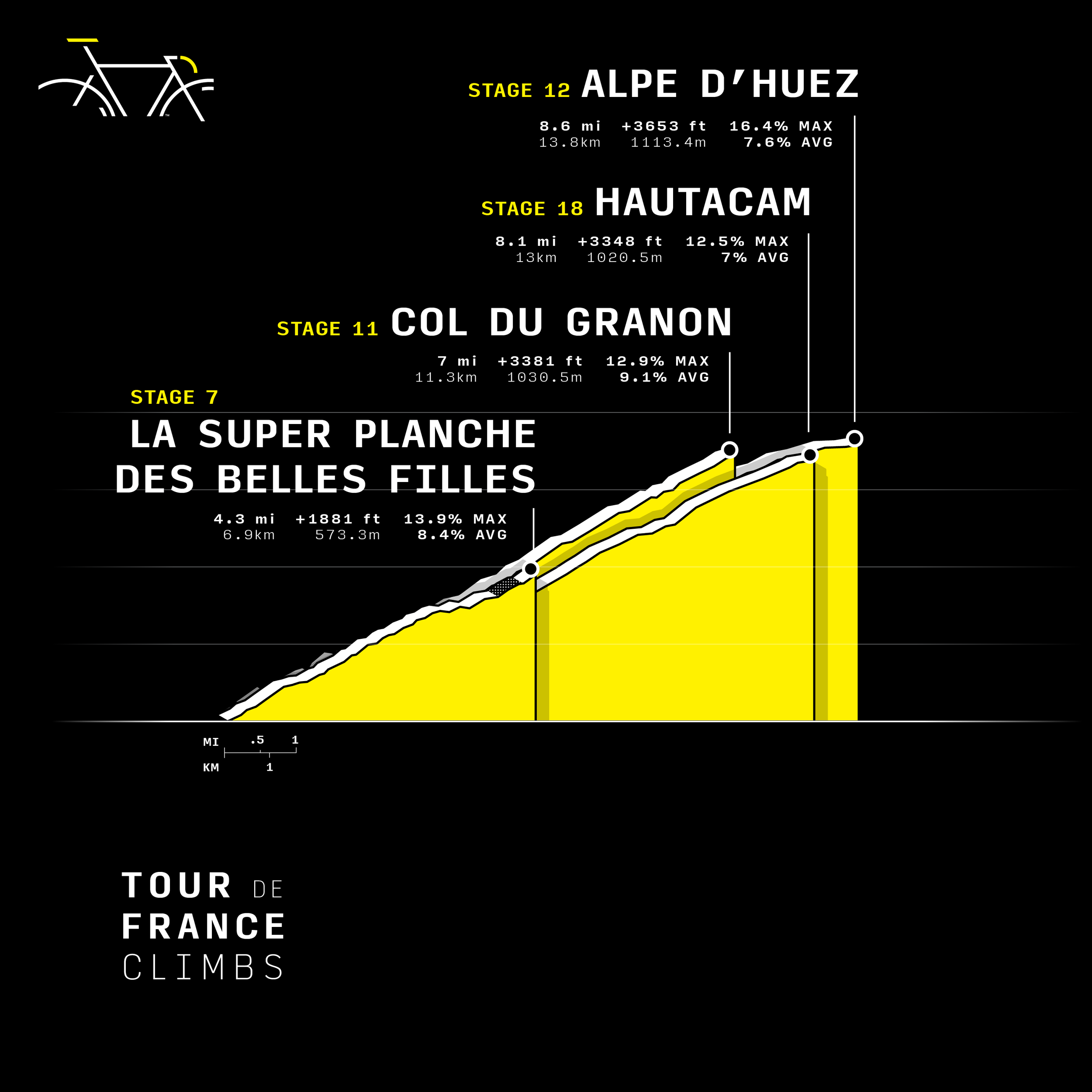
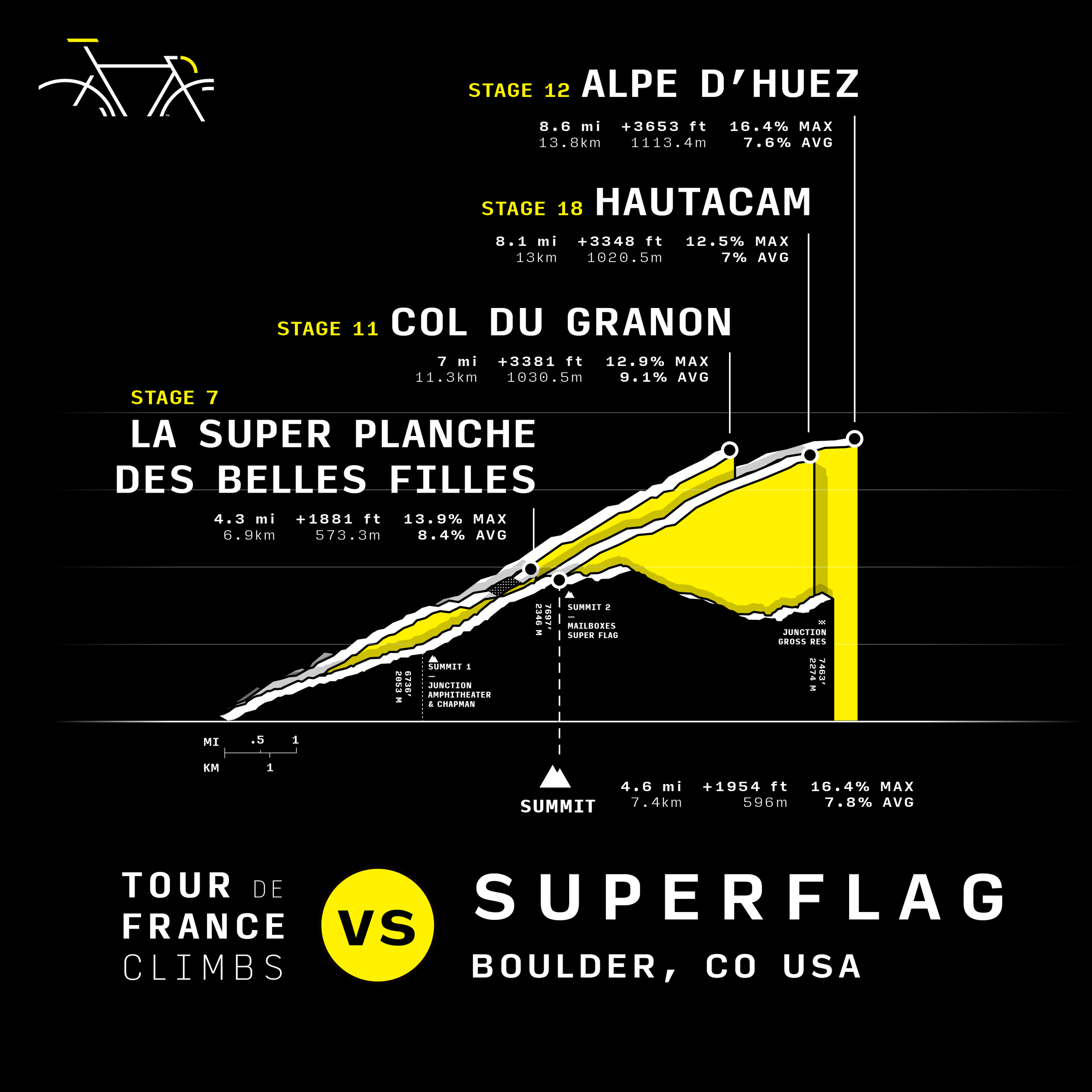
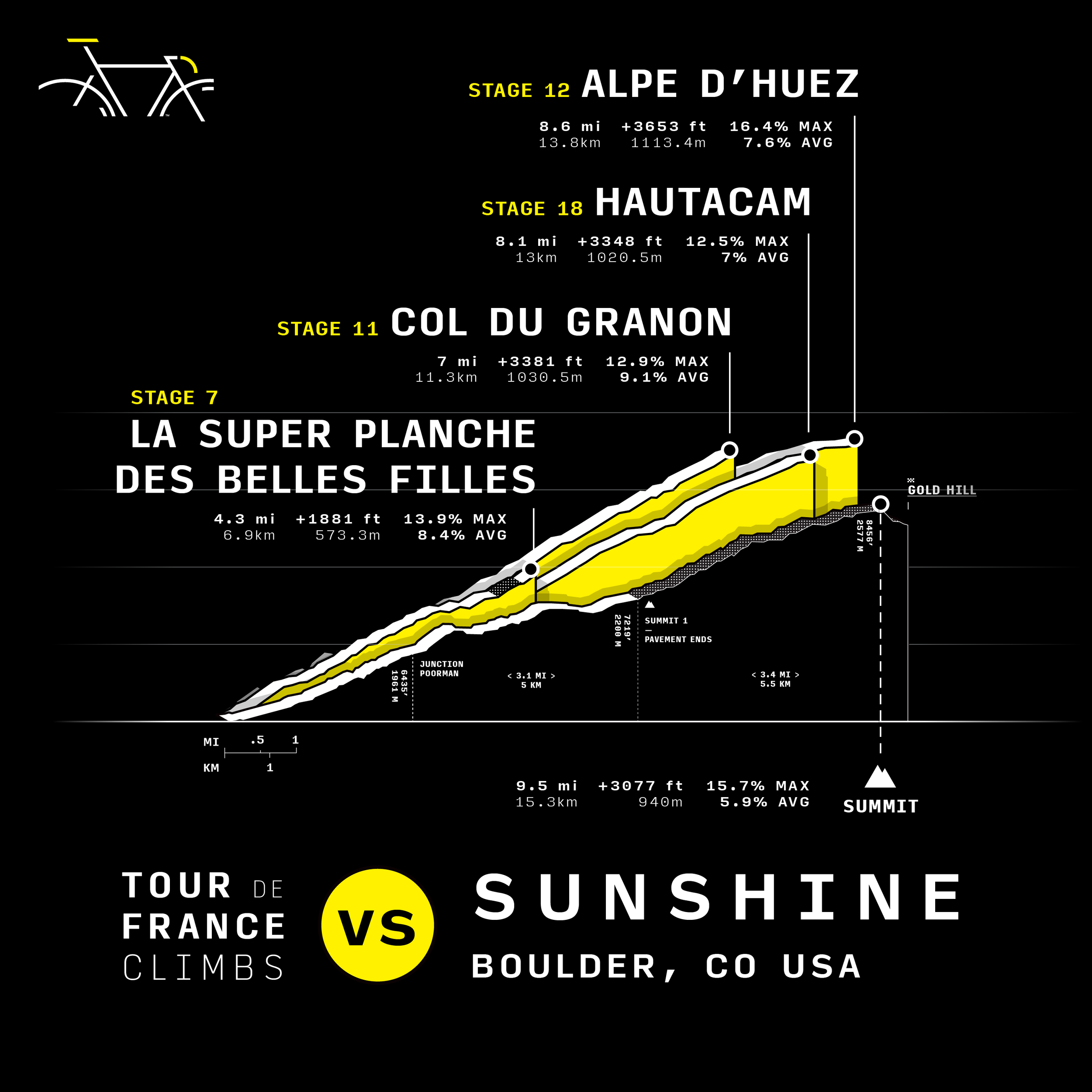
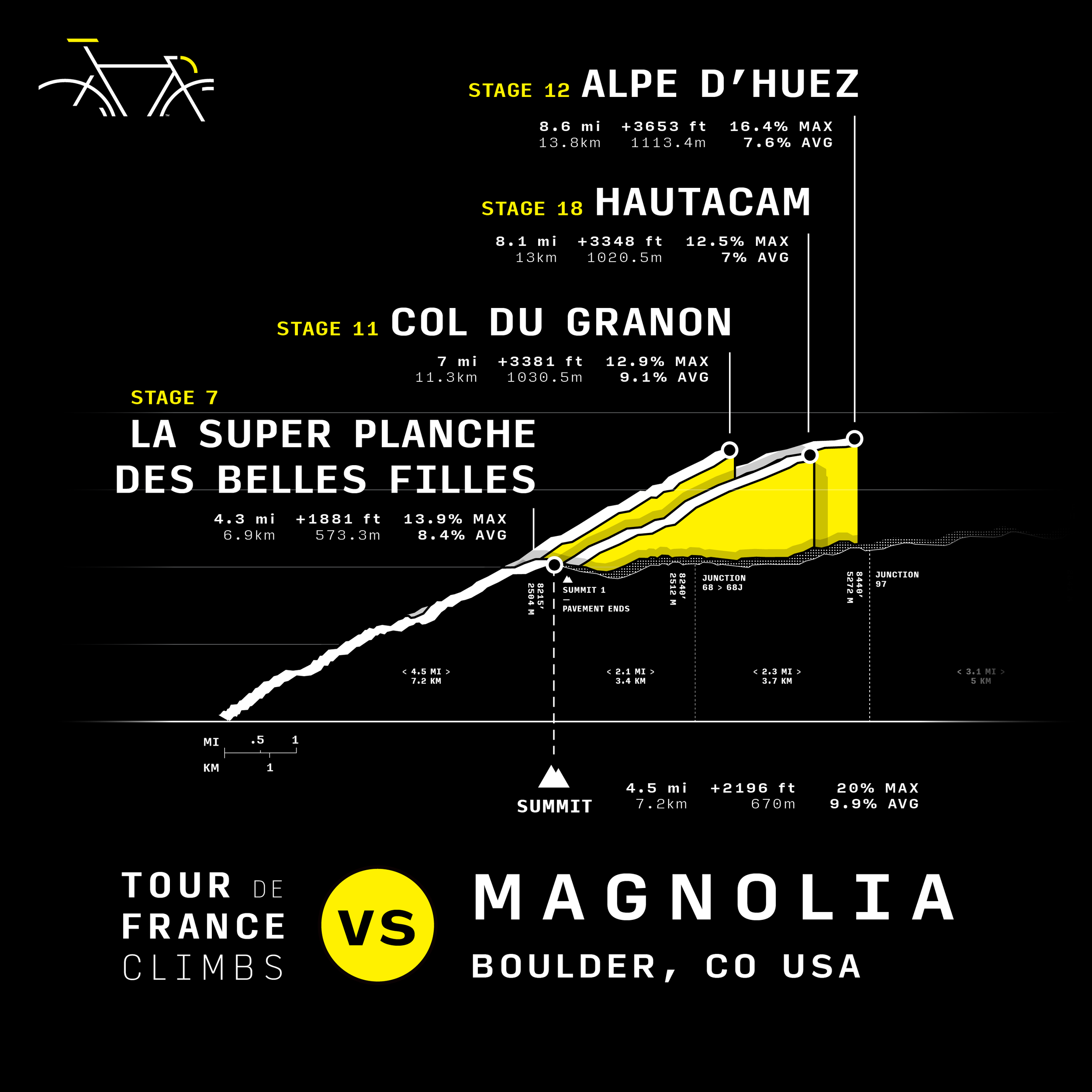
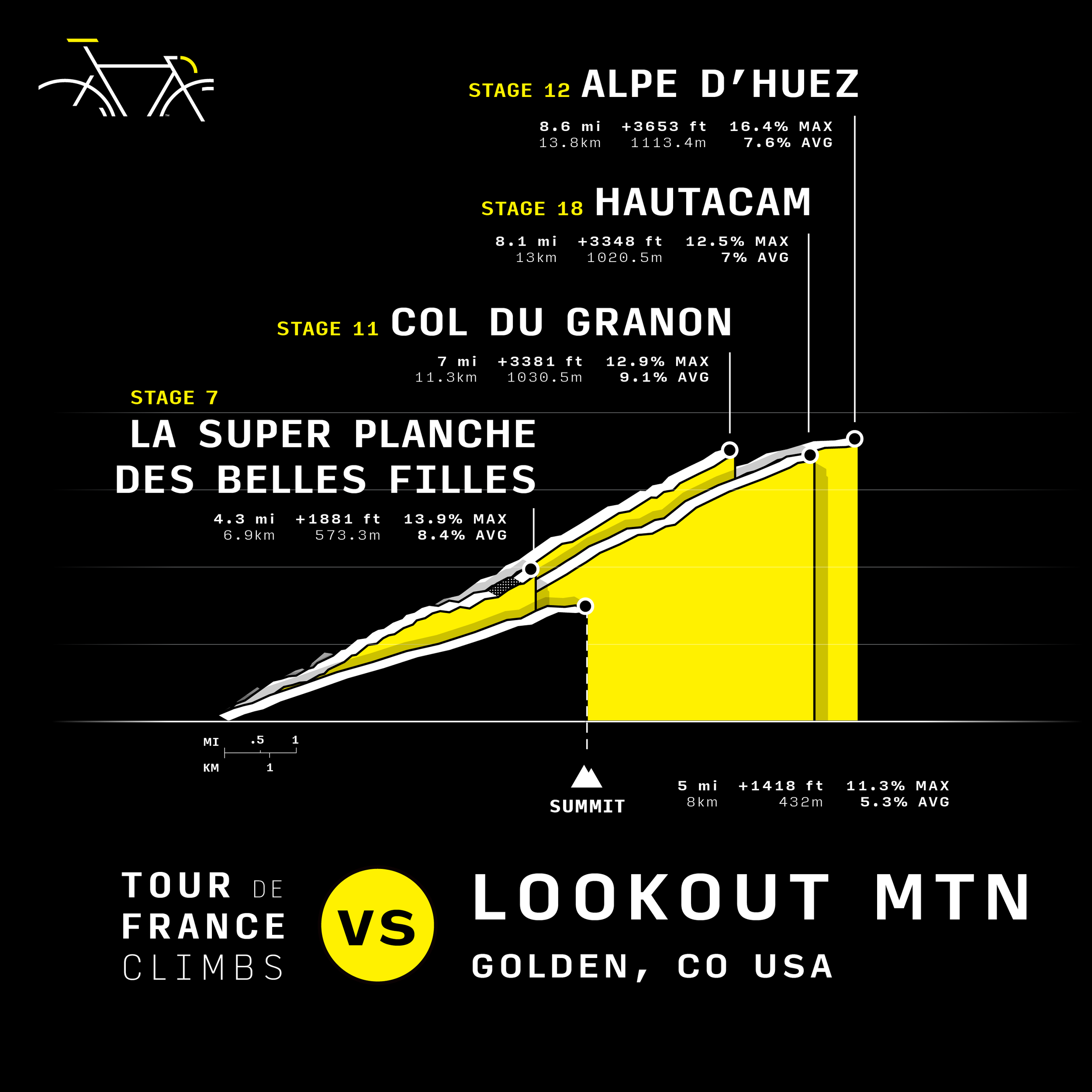
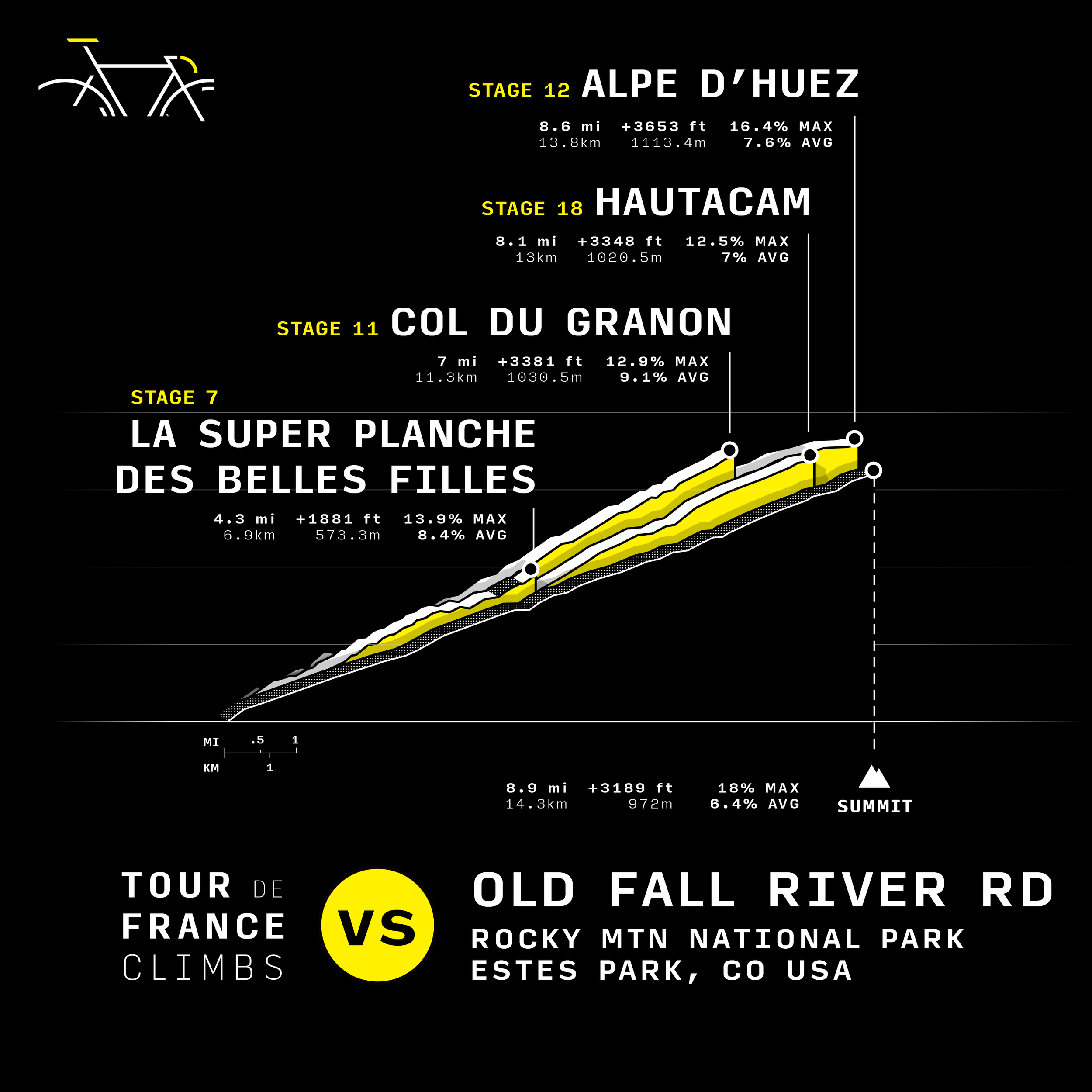


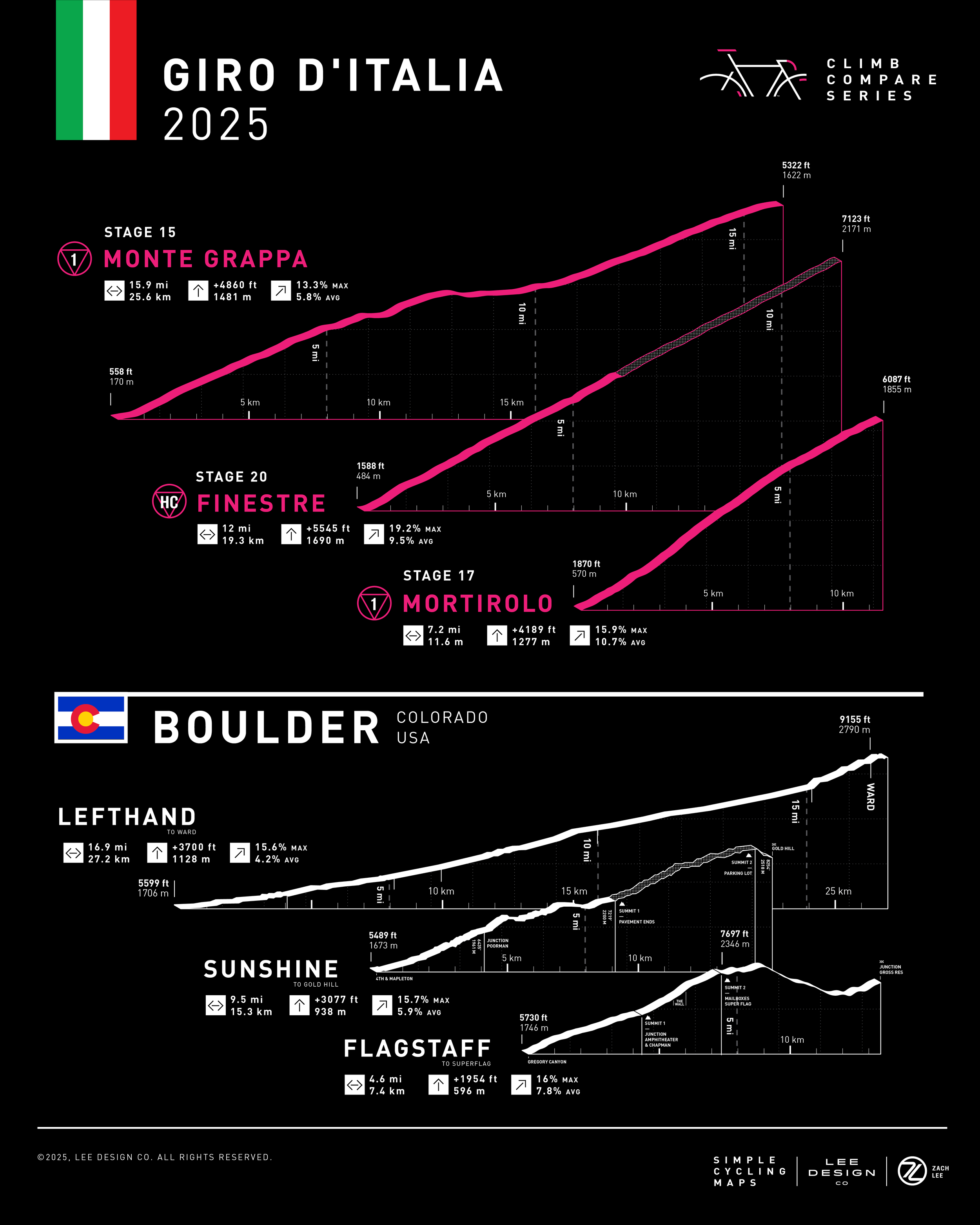


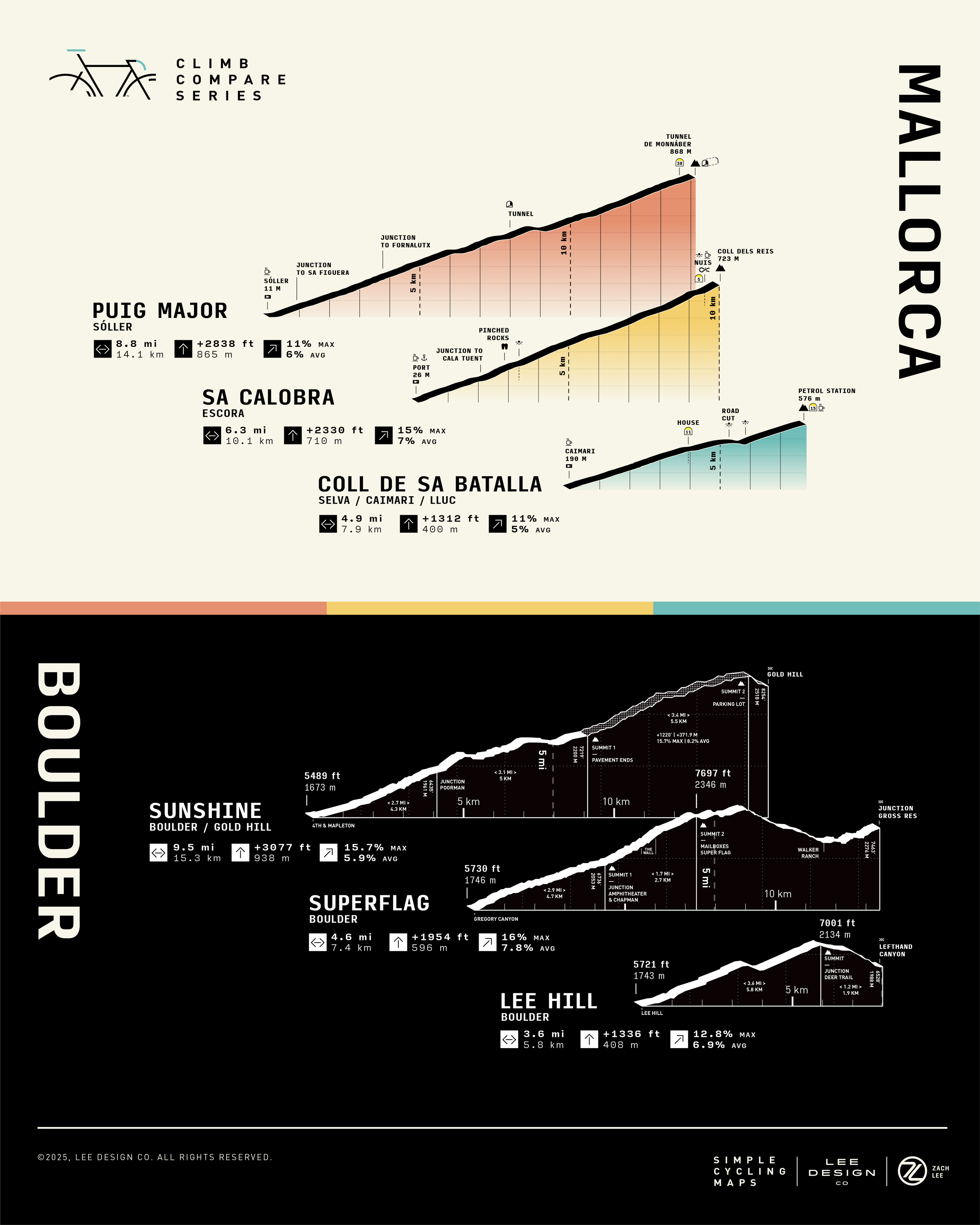






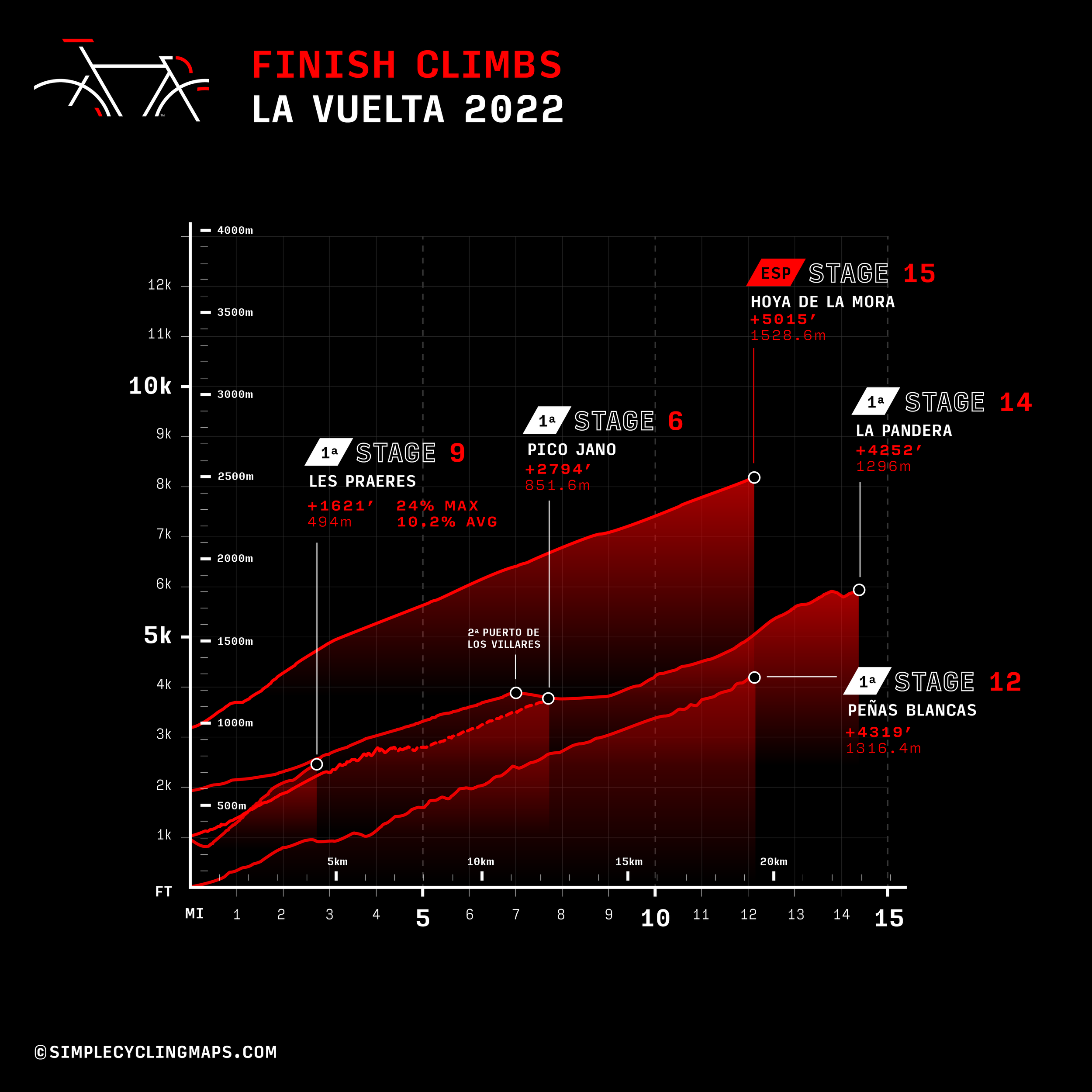
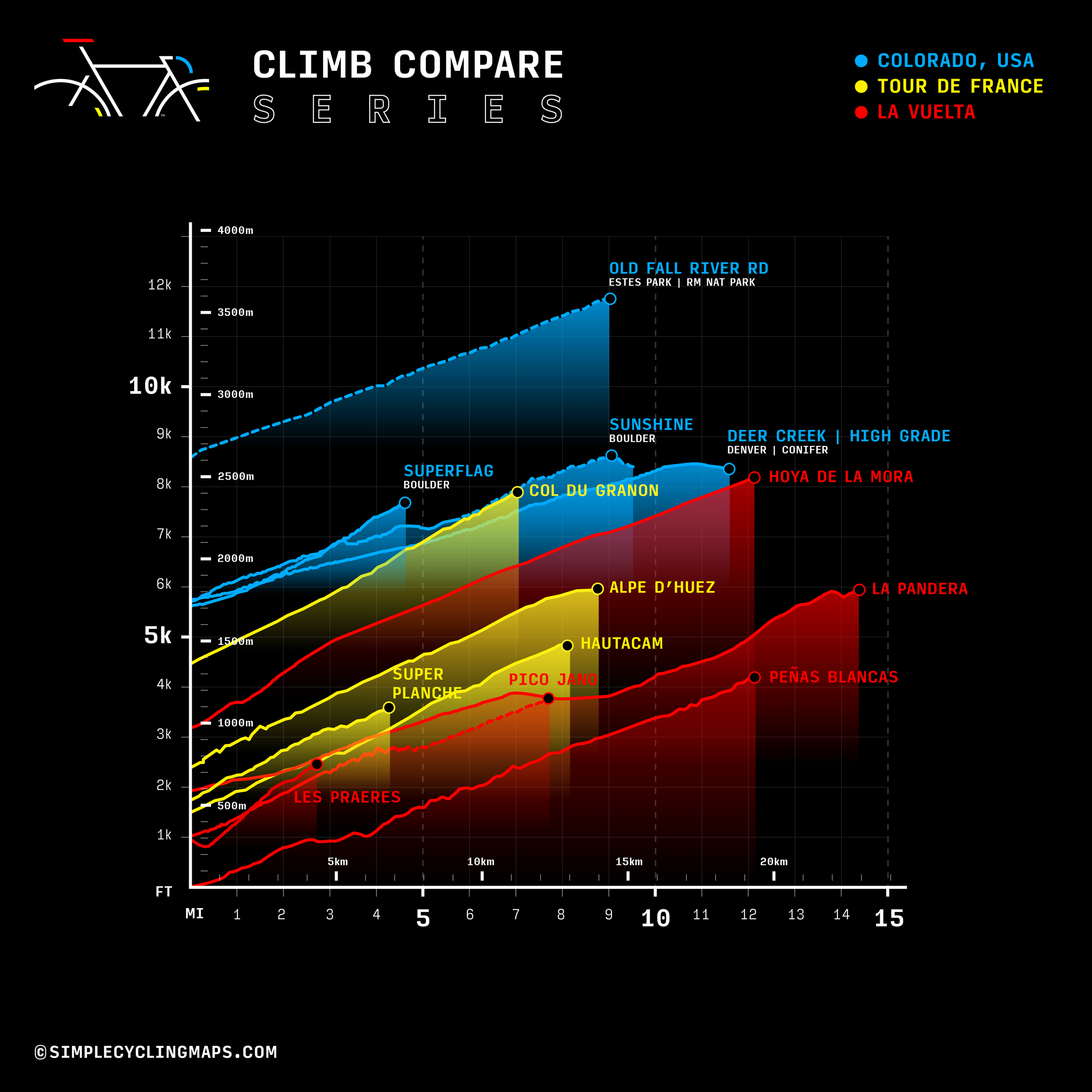
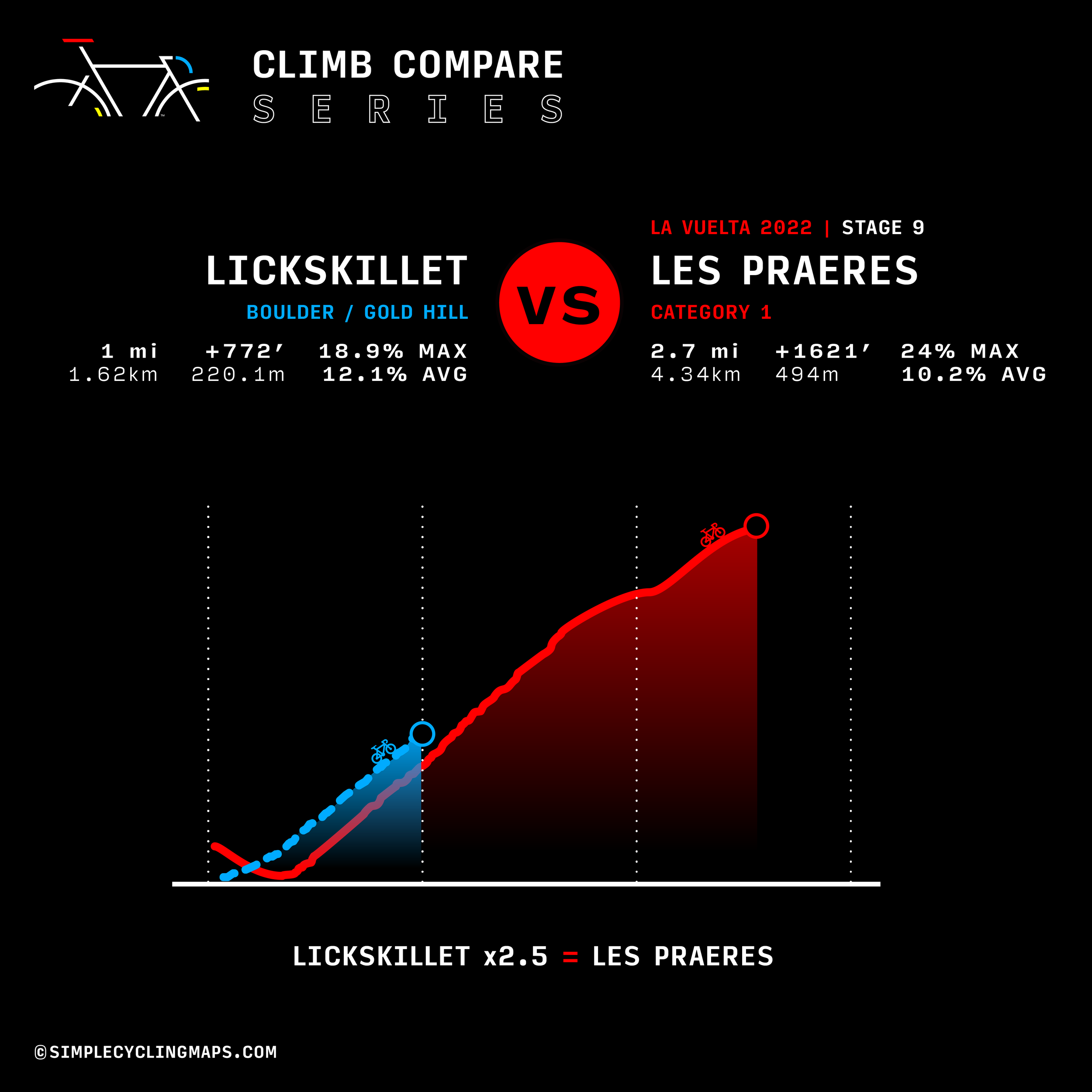

We lined up Onion Valley next to Col de la Madeleine to see how California climbs stack up to the Tour. Turns out? The pain is... pretty comparable. See how your favorite routes measure up—and how you can turn your own into custom-designed climb maps.